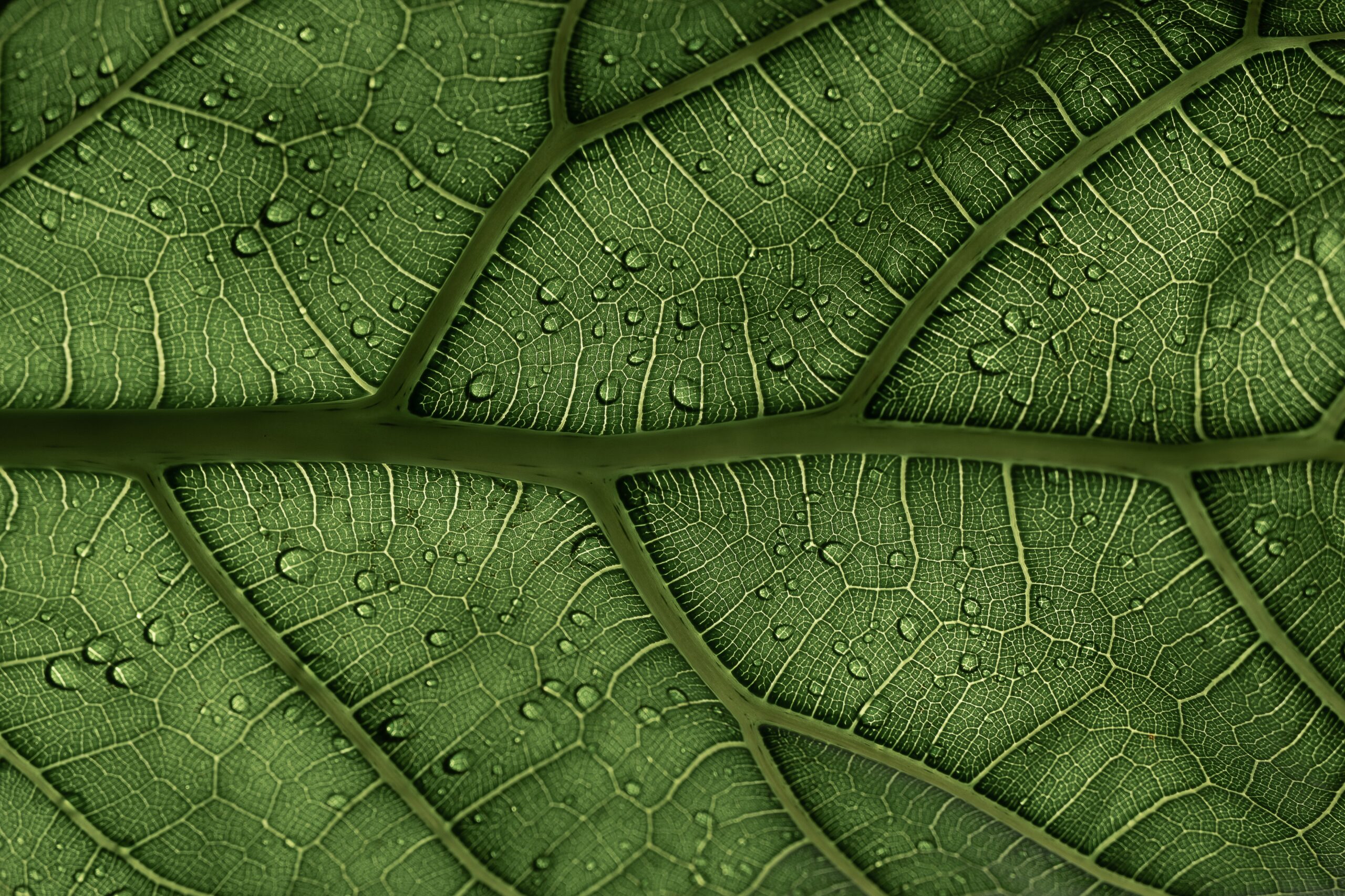Power From Plants (Energy Industry Innovations Part 2)“The secret of change is to focus all of your energy, not on fighting the old, but building on the new.“ Socrates (470-399 BC)

Energy Industry Innovations: Generating Power from Plants
Last week we took a look at a few young innovators that are pushing the energy industry towards a more sustainable future. This week, the JCL Energy Journal continues to celebrate creative new sources of renewable energy. We all know electricity doesn’t grow on trees… but with these new ideas, someday it just might! There have been some particularly exciting developments inspired by the natural world. The last decade has seen some incredible advances harnessing some serious “green power” as a source for potentially limitless renewable energy. Prepare to be amazed by power from plants!
Inspiration from Nature
Take a moment and picture the most successful type of life form you know. Able to adapt to almost any environment. Something that has been thriving since before the dawn of the dinosaur. A life form that can produce its own energy with just the light from the sun and a little water. We’re talking, of course, about plants! The ability to photosynthesize is more than just a common science class topic in school. Photosynthesis is a powerful process that provides access to unlimited renewable energy from the sun. Scientists are looking for a way to harness the power of photosynthesis. They hope to produce both liquid fuel and electricity.
Artificial Photosynthesis
Photosynthesis is, in its simplest terms, the process of converting sunlight and water molecules into glucose. The plant splits water molecules using chlorophyll. The plant “exhales” the oxygen, and uses proteins and enzymes to turn the CO2 into carbohydrates. In artificial photosynthesis, the process is tweaked so it produces liquid hydrogen instead. Hydrogen can be extracted from any body of water, and the process creates zero greenhouse gasses. This could mean access to a huge amount of renewable energy. As of yet, scientists have not yet come up with an efficient method of utilizing artificial photosynthesis on a large scale… but that may be changing.
Yulia Pushkar, a biophysicist at Purdue, is focused on moving artificial photosynthesis from a theoretical concept to a realistic energy source. She and her team recently had a groundbreaking insight into the way water molecules are split during photosynthesis. As a result, they are building an artificial leaf that collects sunlight and splits the water molecules to produce hydrogen. According to a Purdue University press release, “Pushkar posits that within the next 10-15 years, enough progress will have been made that commercial artificial photosynthesis systems may begin to come online.”
The “Hybrid” Tree
Plants are not just an inspiration for artificial photosynthesis. A group of scientists in Italy have taken things a step further by developing ways to turn the plants themselves into a source of power. The Center for Micro-Bio Robotics (CMBR) of IIT in Pontedera (Pisa, Italy) is working on building a hybrid tree that produces electrical energy through its leaves. According to their research, the structure of a leaf allows it to gather charges on its surface from wind energy and other movement. These electrical charges are then transmitted to the inner plant tissue and throughout the plant. Each leaf on a plant is able to generate up to 150 Volts. That’s enough energy to power 100 LED light bulbs!
The team at IIT is currently working on a hybrid Nerium oleander tree. The hybrid tree has both natural and artificial leaves. These leaves work together to gather wind energy and convert it to electricity. This study is just the first step for IIT’s Barbara Mazzolai, who is coordinating with European-funded project Growbot. Growbot’s mission is to create and produce “bio inspired” robots that incorporate “plant-like growing motion”. The plan is that these new robots will be partly powered by plant-produced energy using the technology developed by the IIT team in their hybrid trees. The project is still in its early stages, but the team is optimistic that in the not-so-distance future our forests could be a source of unlimited renewable energy.
E-Kaia
The concept of harnessing electricity directly from plants isn’t unique to the ITT project. Three engineers in Chile have developed a charger for small devices like smartphones using the electricity from a single healthy plant. Evelyn Aravena, Camila Rupcich and Carolina Guerrero came up with their idea in 2009 when they were at university. The end result was E-Kaia, a USB charger that can use the energy of one plant to charge a smartphone in about 90 minutes.
E-Kaia operates by taking a “biocircuit” and burying it in the soil of a potted plant. A USB output sits above the soil. Once placed, the biocircuit captures the electrons produced by the plant during photosynthesis and converts them into a usable form of electricity. The plant does not need all the electrons produced, and the circuit does not harvest all the electrons produced. Therefore, E-Kaia is completely harmless to the plant.
The E-Kaia operation is still very small-scale, but the three founders have big plans to begin commercializing their invention. In the future, they hope the technology becomes useful in bigger projects as well. In an interview with the International Business Times, they even discuss the possibility of parks that are completely self-powered by the trees and plants in them. “Maybe one day we will source most of the electricity we need from nature, so as to have a broader range of renewables and we will replace the traditional methods of energy production and supply that have a strong negative impact on the environment.”
The Future of Energy
Nature continues to provide a prolific source of inspiration for new ideas. Harnessing the power of plants and developing technology based on their adaptations is only logical. Of course, the energy industry will have to “grow” (pun intended) along with these innovations. There will be a need for modifications and redesigns of our current electrical grid. Engineers have already designed electrical transformers to specifically work with solar panels. In the near future, it is likely we will need more modifications to adapt to these new energy sources. Open minds and out-of-the box thinking will be crucial over the coming decades. JCL Energy is excited about the future of energy. We strive to lead the industry towards a brighter and more sustainable future! Next week, the JCL Energy Journal will take a look at some creative new ways to harness the power of motion in the quest for renewable power.
Sources
Cross, Daniel. “Trees Could Soon Serve as ‘green’ Electricity Generators.” Sustainability Times, 30 Dec. 2018, https://www.sustainability-times.com/low-carbon-energy/trees-could-soon-serve-as-green-electricity-generators/.
“How Plants Can Generate Electricity to Power LED Light Bulbs.” ScienceDaily, Istituto Italiano di Technologia, 12 Dec. 2018, https://www.sciencedaily.com/releases/2018/12/181212093308.htm.
Fabian Meder, Indrek Must, Ali Sadeghi, Alessio Mondini, Carlo Filippeschi, Lucia Beccai, Virgilio Mattoli, Pasqualantonio Pingue, Barbara Mazzolai. Energy Conversion at the Cuticle of Living Plants. Advanced Functional Materials, 2018; 1806689 DOI: 10.1002/adfm.201806689
Layton, Julia. “How Artificial Photosynthesis Works | HowStuffWorks.” HowStuffWorks, HowStuffWorks, 18 May 2009, https://science.howstuffworks.com/environmental/green-tech/energy-production/artificial-photosynthesis.htm.
Oliver, Sam. “New ‘E-Kaia’ Technology Harvests Excess Energy from Plants to Charge Mobile Phones | AppleInsider.” AppleInsider, AppleInsider, 11 May 2015, https://appleinsider.com/articles/15/05/11/new-e-kaia-technology-harvests-excess-energy-from-plants-to-charge-mobile-phones.
“Plant Power: Photosynthesis as Renewable Energy | LoadUp.” LoadUp, https://goloadup.com/plant-power-photosynthesis-renewable-energy/. Accessed 10 May 2022.
Riccio, Chiara. “With E-Kaia We Can Source Electricity from Plants – LifeGate.” LifeGate, 12 Nov. 2015, https://www.lifegate.com/e-kaia-electricity-from-plants.
Russon, Mary-Ann. “E-Kaia: Here’s a Smartphone Charger Invented in Chile That Takes Energy from Plants.” International Business Times UK, International Business Times UK, 11 May 2015, https://www.ibtimes.co.uk/e-kaia-heres-smartphone-charger-invented-chile-that-takes-energy-plants-1500724.
“Soaking up the Sun: Artificial Photosynthesis Promises a Clean, Sustainable Source of Energy – Purdue University News.” Purdue University News, Purdue University, 15 June 2015, https://www.purdue.edu/newsroom/releases/2021/Q2/soaking-up-the-sun-artificial-photosynthesis-promises-a-clean,-sustainable-source-of-energy.html.
Woollaston, Victoria. “E-Kaia Portable Charger Harnesses Electricity from Soil to Charge Phone | Daily Mail Online.” Mail Online, Daily Mail, 12 May 2015, https://www.dailymail.co.uk/sciencetech/article-3078365/The-ultimate-power-plant-Biocircuit-harnesses-electricity-soil-houseplant-charge-mobile-phone.html.


